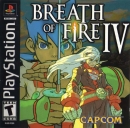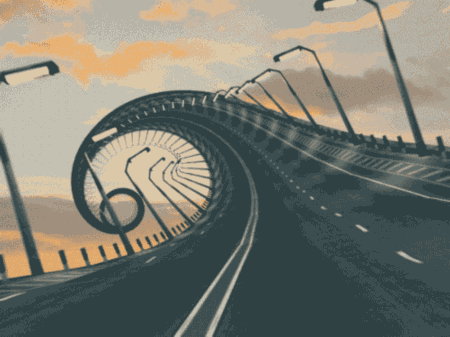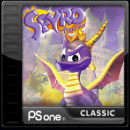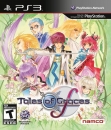Original article found here; http://www.theguardian.com/technology/2015/jul/12/no-mans-sky-18-quintillion-planets-hello-games The article has shiny pictures, so it might be the best spot to read it for those of you who don't mind following a link. I'll be posting in the thread a list of stuff that really stuck out for me, so if anyone gets hit with TL;DR feel free to stick around for that. (Though formatting the article properly was a pain in the butt, so you should read it all! :< ) Also, since a simultaneous PC release is all but confirmed, figured Gaming Discussion would be more appropriate than Sony Discussion; if a mod disagrees, they can feel free to move it. :3
Sean Murray is sweating in an Uber cab as it lurches to the staccato rhythm of Los Angeles traffic. The 34-year-old video game programmer is anxious. His meeting at SpaceX with Elon Musk, the American business magnate who hopes to put a human on Mars within the next two decades, overran and Murray and two of his colleagues are perilously late for their next appointment. It is, if not the most important meeting of his life, then almost certainly the most notable (and this in a week of notable meetings; before Musk, Murray met the rapper Kanye West). In five minutes Murray and his colleague, David Ream, are due to show No Man’s Sky, the video game he and a dozen or so friends are creating half a world away in Guildford, to the film director Steven Spielberg.
Like Murray, Spielberg is in town for E3, the video game industry’s largest annual gathering, held in boiling LA each June, where publishers show off their forthcoming titles to baying crowds of fans. The cab pulls up at the Los Angeles Convention Centre, where the event takes place over three days. The building is draped in advertising for next year’s blockbuster titles. Murray exits the car with a slam and begins to weave through the crowd, clustered around screens and fingerprint-smeared controllers. He arrives at one of Sony’s cool private meeting rooms, just as Spielberg and his entourage arrive. Inside, Murray, with an apologetic press of a button, loads up the universe.
As early as 1984, a computer game called Elite, created by two Cambridge University students, David Braben and Ian Bell, allowed us to explore the furthest reaches of the galaxy from the relative comfort of a desk chair. And yet No Man’s Sky is unprecedented. The game presents a traversable cosmos of unimaginable scale: 18 quintillion life-size planets by the studio’s latest count. Murray claims that, were you to visit the game’s virtual planets at a rate of one per second, our own sun would have died before you’d seen them all. These worlds were created, not by the hand of an artist or designer, but by algorithms. As in Minecraft, another gigantic video game world created by an improbably small team, every rock, flower, tree, creature and scene is generated rather than, as in most video games, drawn or shaped by hand.
In No Man’s Sky, you play as an astronaut, piloting the kind of nimble craft that once flew on the covers of Isaac Asimov paperbacks. Like those airbrushed visions of space travel, the game offers a curiously nostalgic vision of the future. Every player will start their journey on an undiscovered planet; they will be the only person to have walked its surface. From there, you can board your ship, take off, break the atmosphere and begin to tour the galaxy (all without the interruption of a loading screen). The stars you see in the unfathomable distance aren’t a mere illusion, like fairy lights studded into a black curtain of a stage backdrop, but real orbs. Travel in their direction for long enough and you can touch them. “We are attempting to do things that have never been done before,” Murray told me, last year, when the project had only just been made public. “No game has made it possible to fly down to a planet, and for it to be planet-sized, and feature life, ecology, lakes, caves, waterfalls, and canyons, then seamlessly fly up through the stratosphere and take to space again.”
While you might expect a universe created by mathematical rules rather than an artist’s eye and imagination to be bland and samey, No Man’s Sky boasts tremendous depth and variety. One planet is carpeted by bright orange tall grass, through which antelope-esque creatures plod. The trunks of tall palm trees reach upwards into a green sky, before exploding into a splay of crimson fronds. Another planet is wet with mist; only the tips of a few conifers manage to break the murk. There is biodiversity then, but in this game only relatively few planets sustain life. The conditions will, as with Earth, need to be ideal.
For example, there is a specific distance from a star at which it is likely there will be moisture. From this information the game decides that there will be rivers, lakes, erosion and weather, and every aspect (including the sky’s hue) is dependent on the type of liquid that forms the atmosphere. Many planets will be deserted, some entirely barren. As new places are discovered, information such as whether they’re toxic or radioactive, or whether they contain life, will be uploaded to the game’s servers along with the name of the player who made the discovery. These intrepid names will be forever associated with the location, like a space-bound Christopher Columbus.
Unlike many video games, which are rigged to respond only to inputs and otherwise rest dormant, like a musical instrument awaiting a player, No Man’s Sky will tick and function regardless of human interaction. Animals have daily routines that they follow. They might drink in the lowland lakes during the daytime before retreating to the hills to graze. Heavy freighters will plod through space to their own timetable, following trade routes and visiting planets where smaller ships will peel off to gather resources. As with the game’s terrains and atmospheres, all of this behaviour is based on mathematics: fractal patterns that are followed with clockwork reliability.
The overarching goal for players is to head toward the centre of the universe. This common destination will increase the chance that people will encounter one another on their journey (even if the game sells millions of copies, when your playground consists of 18 quintillion planets, a single encounter is statistically unlikely). But it’s an optional objective. “We don’t know whether people will congregate or disperse,” said Murray. “I know that people don’t like to be told that we don’t know what will happen in our game, but that’s what is exciting to us.” Indeed, it’s entirely possible that a player will roam for years and never meet another soul. Others may never leave their home planet, instead choosing to chart its terrain, month by month. While it will be possible for players to mine, trade or fight with others, No Man’s Sky will also accommodate the lone, nomadic wolf.
For Murray, this kind of solitary existence defined his early childhood. His “eccentric” family travelled a great deal when he was a child. He was born in Ireland but, from the age of four, lived on a million-acre farm in the Australian outback. The family was responsible for its own electricity, water and survival. The farm was a 400-mile drive on a dust track from the nearest main road. “We were completely cut off,” Murray said. This remote existence had an impact that he carries, he says, through life. For one, it seeded in Murray a fascination with the galaxy. “At night you could see the vastness of space,” he said. Later, when his parents bought him a computer, he’d play Elite as a way to explore stars similar to those that he’d watch outside his window.
Murray’s interest in games blossomed into a career with the multinational video game publisher Electronic Arts. He formed Hello Games with three friends, each of whom also worked at major studios, in 2009. When the team began to discuss what kind of game they would like to make, Murray returned to those formative memories under the stars. “Those emotions started to surface, the feelings you had as a child but which are rarely displayed in video games,” he said. “We talked about wanting to explore the vocations that we wanted to be when we were kids.”
Hello Games’s first project, Joe Danger, explored the life of one such aspirational career of childhood: stuntman. The game was a major success (it made its money back within an hour of release) but it also locked the developers into a cycle of sequel-making that Murray and the others had formed the company to escape.
“We went on to make four games in the series across seven platforms,” he said. “Each time you sit down to embark on a new project you start to run the calculations: will this be the next five, seven, 10 years of my life working on this game? It changes your mindset when a single game’s development represents a significant chunk of life. You end up thinking: how many games do I have left?”
With this existential crisis in mind, Murray decided it was time to embark on the project he’d dreamed of as a child, a game about frontiership and existence on the edge of the unexplored. One night, alone in the office, he began to program the big bang that would lead to No Man’s Sky’s universe. He wanted to evoke the imagined feeling of landing on a planet and being the first person to discover it, the sense of awe and trepidation at not knowing what secrets lay within a place’s geographical folds and spires.
“In this era, in which footage of every game is recorded and uploaded to YouTube, we wanted a game where, even if you watched every video, it still wouldn’t be spoiled for you,” he said. “And we wanted those discoveries to be meaningful in the sense that they could be shared with other players, all of whom existed in the exact same universe, rather than inside their own random dimension.”
Years later, the game’s scale remains vast. But now it is matched by the weight of expectation. In an industry that values bankable sequels made by teams of hundreds, this is a new name in a new genre made by an implausibly tiny team (it started as four and has now ballooned to 13). In both 2014 and 2015 Sony made No Man’s Sky the centrepiece of its E3 press conference, held in the cavernous Los Angeles Memorial Sports Arena.
“People say to me: there’s never been a game that’s had this much hype and hasn’t disappointed everyone,” Murray said. The team at Hello Games has been careful not to over-promise, or to suggest that there are elements to the experience that aren’t present.
“We’ve always ensured that every video and demo we put out is raw gameplay,” Murray says. “Every time you see No Man’s Sky, it’s literally me playing, wearing headphones, trying to film things that go well with the music. It’s the most genuine way in which we can show the game.” Despite these efforts, people seem to let their imagination run away. “They project their own idea of the game onto what we’re doing. Maybe that is the nature of hype: runaway excitement that can never be matched?”
The team has remained true to its vision (the design hasn’t changed much since the game’s inception, Murray claims) rather than seeking to accommodate the endless requests from players who want to see certain features implemented. While showing the game to members of the enthusiastic press, Murray has fielded requests that they make it possible for players to create buildings, communicate with aliens or implement land vehicles into the game. “It’s the reason we haven’t done things like Kickstarter,” Murray said. “There could be so much feature creep. A lot of other companies would have taken the interest, taken loads of investment, grown the team massively and so on. And of course, we did talk about things like that. But it felt like it wouldn’t work. We had an idea for a game and we may never be able to deliver on the hype. But we can deliver the game we set out to make. That has to be enough.”
“Personally, I don’t find the attention motivating,” said Murray. “When I’m not attending these trade shows to demonstrate the game, I make a real effort to block everything out. But it’s a constant hum of expectation, or like something hanging over you. Sometimes something will make me aware of it and I do a little shudder.”
The attention can, at times, become too much. Murray recently cancelled an invitation to speak at the SXSW music, film and interactive festival in Austin, Texas. He deleted Twitter from his phone. “You’d think people saying ‘I’m excited for your game’ would be motivational,” he said. “But actually, creativity and hard work is driven by ambition. And ambition isn’t helped by constant affirmation. You have to almost get to a place where you’re unhappy with everything.”
The insatiable curse of perfectionism was in full display at this year’s E3. Again Murray took to the stage during Sony’s press conference. But this time, he was playing live on stage, a ballsy move with unfinished software. “We decided that I was just going to stand up and play the game,” he said. “There was a lot of pressure on us to do something bombastic. I didn’t want to do that. I wanted to go: this is the kind of experience you’ll have. If you’re excited by that, then it’s real and we can match that. And if not, well, maybe that’s OK…” As part of the demonstration, Murray wanted to show off the game’s scale in more concrete terms. In front of the audience he pressed a button and the world shrank into a single point on a sprawled galactic map. Another, and the galaxy folded into a dot, now just a pinprick in a constellation of bright markers. The crowd drew a collective breath.
After he left the stage at 8pm, chased by the sound of applause, Murray returned to the hotel suite Hello Games had hired across the road from the E3 show floor. It had become an impromptu development studio, complete with networked computers and a shantytown of plastic connectors and wires. “It should have been this triumphant moment,” Murray said. “Nothing had crashed! Instead, I started working on the game through the night, trying to get it into the best possible shape to show the press the next day. The stuff we worked on that night? Nobody noticed. But, I couldn’t sleep. There’s always more to be done.”
The team is yet to announce a release date for No Man’s Sky, which will debut simultaneously on Sony’s PlayStation 4 and PC, probably next year. Most blockbuster video games, like movies, announce their arrival years in advance, with launch dates carefully planned to reduce the threat of competition. Murray, despite pressure from fans, has opted to wait. “Ultimately we will pick the date when we have a finished game,” he said.
“The team is so small that it’s the way it has to work. I used to work on teams where 200 people were working together; it would be much more like an assembly line. We’d have one level and it’s February and we’d know we’ll have 10 levels by May and 20 levels by August and so on. It was tightly controlled. For us, we’re building this game where unless all systems work in harmony, nothing really works at all.”
Two days after his appearance on stage at E3 last month, Murray began the private demonstration with Spielberg. The director is currently working on the film version of Ready Player One, a science fiction novel by Ernest Cline in which most humans spend their time playing a never-ending game inside a digital utopia. In the story, players compete to find a trinket hidden by the game’s late creator, concealed somewhere within the virtual expanse.
For many, the quest has become an obsession. For Spielberg, it is No Man’s Sky’s lack of a similarly focused goal that makes Hello Games’s project so interesting. “He picked up on the sense of wonder,” Murray recalled. “He said the game provides something close to a meditative experience. Our game has various aspects to it. Something that sometimes resonates with players is the appeal of virtual tourism.”
Video game designers often seek to propel us through their worlds, laying down a crumb trail of objectives designed to hold our attention. But sometimes the worlds they create cause us to put down the to-do list, to stop and stare at this forest, that horizon, those fields, these spaceships. Games allow us to enter into the roles and vocations of people unlike us – the racing car driver, the international football star, the marine – but they also enable us to visit and explore places that would be unreachable any other way. Perhaps the greatest appeal of No Man’s Sky is the way it provides us with the opportunity to make the unknown known. It is the same urge that launched Elizabethan explorers around the world in fat galleons, the promise of the strange animals that they might find, the unpredictable tribes they might meet, the unseen sights they would see, and the extraordinary pleasure of filling in a previously obfuscated area of a map.
Today, our own, meticulously charted world rarely offers such thrills. The ubiquity of the mobile phone, the terrain-gobbling tenacity of Google Earth’s satellites and the way in which all of this data can be shared instantly has made Earth smaller than ever.
Yet video games offer to make explorers of us all again. From familiar building blocks (quite literally, in the case of Minecraft’s brick-like construction) they create unfamiliar places with unfamiliar vistas that are, nevertheless, somehow real. The latest game consoles have the built-in ability to take and share in-game photographs, an acknowledgement that visitors will want to capture a scene or a moment for posterity, to make their discoveries public and shared.
The game hopes to offer similar jolts of elemental wonder, all without the drag of real-world travel. These vivid places are compacted into the television, facilitating a kind of tourism and exploration that is both convenient and peril-free. Can virtual discovery match the thrill of real-world exploration? Perhaps not. But the imitation is nevertheless powerful, compelling and, crucially, cheaper and more accessible than the real thing.
A fortnight after Murray’s meeting with Elon Musk, a SpaceX Falcon9 rocket carrying food and supplies to the International Space Station exploded minutes after takeoff from Cape Canaveral, Florida. “Space is hard,” tweeted American astronaut Scott Kelly in reaction to the disaster. Although, less so when encountered on a widescreen television.
One of Murray’s friends writes science fiction novels. The writer conjures worlds from his imagination, a landscape of the future and the technology by which humans will interact with that place. No Man’s Sky is also involved in this long-running tradition (the alien landscapes; the hyper-drives), and yet the game represents its own futuristic miracles. It squeezes 18 quintillion planets on to a hard drive. It summons life from algorithms and allows humanity, together, to explore and discover in a collective project.
Murray caught up with his author friend recently. “He bemoaned the fact that, these days, a lot of science seems quite normal,” he says. “Something he said has stayed with me: ‘It’s harder to be futuristic than ever before.’”
Zanten, Doer Of The Things
Unless He Forgets In Which Case Zanten, Forgetter Of The Things
Or He Procrascinates, In Which Case Zanten, Doer Of The Things Later
Or It Involves Moving Furniture, in Which Case Zanten, F*** You.















































